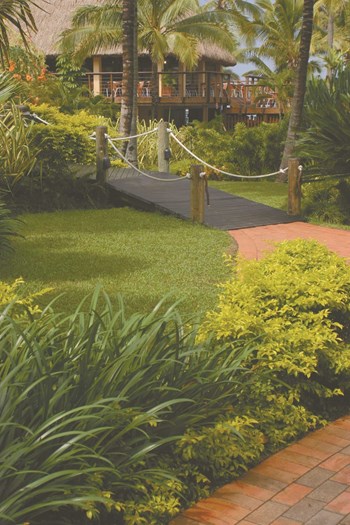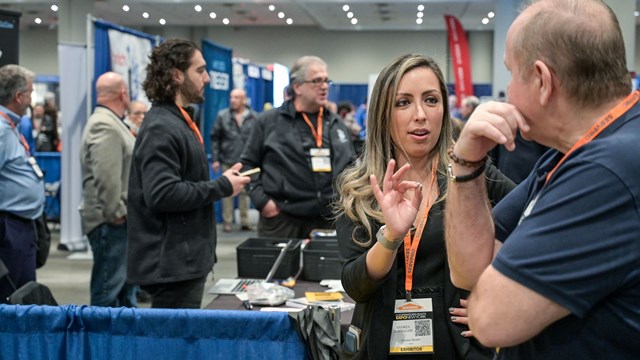
There are many reasons why homebuyers choose to live in a residential neighborhood, whether their home itself is a townhouse, villa, or single family home. Some people simply enjoy the freedom of not being in a multifamily building, where your neighbors watch your every move. Others enjoy being able to walk out their front door and literally smell the roses; in some cases roses that they planted themselves. One of the biggest perks of living in a residential neighborhood, however, is the opportunity to have a real yard complete with natural, living grass.
A lawn does not take care of itself, though. Here in South Florida, cultivating, fertilizing, and hydrating can take on a whole new set of challenges due to the heat, humidity, and varying cycles of rain and drought. Fortunately for HOA owners and groundskeepers, there are resources like the University of Florida's College of Agricultural and Life Sciences and the National Institute of Food & Agricultural Sciences (IFAS) Cooperative Extension Service, which have dedicated millions of dollars and countless hours of research to determine the best types of grasses for the state, and the best ways to keep them happy and healthy.
Grass Class
According to Teresa H. Monson, senior communications specialist for the St. Johns River Water Management District in Palatka, the most common grass in South Florida is St. Augustine grass. These broad-leafed grasses respond very well to the Florida weather, and grow best in full sunlight. They are available in two variations that grow better in the shade; Bitter Blue, which is a good option for shady lawns and has cold weather tolerance, and Sapphire, which is heat-, salt-, shade- and drought-tolerant, making it an excellent choice for coastal areas.
“Although St. Augustine grass is a popular choice among Florida homeowners, many people are looking for other alternatives to save water—and money,” says Monson, “either by installing more water-efficient grass types or by implementing water-wise landscaping practices that focus on 'right plant, right place' and use Florida-friendly plants, mulches and other alternatives to turf.”
Other popular grass varieties in Florida include Bahia, Bermuda (used primarily in golf courses), Centipede, Seashore Paspalum, and Zoysia. Each of these grass types have their own set of pros and cons, and most can be found throughout the state, with the exception of Centipede, which is primarily found in North Florida.
Water-Wise
There has been much talk recently in the news and online regarding this current dry pattern. The South Florida Water Management District (SFWMD) has recently approved voluntary watering restrictions for areas from Orlando through the Florida Keys. These voluntary restrictions are more severe than the current three-day-a-week restrictions the district recommends. According to the SFWMD website (www.sfwmd.gov), local governments across the region have the flexibility to adopt alternative landscape irrigation ordinances at their discretion, based on local water demands, system limitations or resource availability. Because several counties and cities have exercised this option, residents should always check local ordinances for watering days and times in their area. According to the pros, you should basically always assume that the restrictions are in place, unless you are told otherwise.
According to Monson, if there is a positive aspect to the restrictions, it is that they simply codify what landscape architects have always said were proper watering techniques for Florida landscapes.
“Conservation is among the most important strategies to help meet Florida’s water supply needs for today and the future,” says Monson, “and the efficient use of water outside and inside the home can save thousands of gallons of water per month. Saving water can be easy and often delivers money savings as well.”
The Middle Path
As in all things, there must be a happy medium when it comes to turf care. Unfortunately, many lawns in South Florida fall within two extremes. William Quigley, a licensed member of the Florida Bureau of Entomology and owner of Cutters Edge Professional Service Company, a full service landscape company in Davie serving South Florida, summed it up the following way.
“Lack of irrigation or inadequate irrigating will cause the plant material to stress,” he says. “Stress of the plant can cause the plant to release pheromones, which attracts insects that will feed on them and damage them further.”
Overwatering is just as detrimental, Quigley continues. “Soil is like a sponge that holds water. Once the soil is moist, plants are able to obtain water from the soil. As more water is added to the soil it will eventually become saturated and the excess water simply drains through and is lost to ground water. This also affects the nutrient and pesticide intake because the excess water pushes them past the root’s feeding zone. Fertilizers and pesticides that do not get ingested by the plant do pollute the ground water.”
Once you’ve solved the irrigation problem, and your lawn is flourishing nicely, the question becomes, How tall is too tall? It is recommended to cut most St. Augustine grasses on a weekly basis due to their rapid growth. Since most varieties of St. Augustine grow an average of three to nine inches weekly, it is not recommended to cut less than 28 times per year, to a height of three to five inches. Other deciding factors might be the community members' preferences, the desired curb appeal and budgetary constraints.
If you live in a community association, most of the time your lawn is the least of your worries. The main reason for this is your friendly neighborhood landscaper, who shows up about once a week to mow the lawn, in some cases trim the trees and bushes, and generally take care of all your outdoor landscape needs. There are many good reasons to hire a top notch landscaping company, not the least of which is the matter of convenience. In a state where the average population is an aging one, the last thing you need to worry about is your lawn. So, as they say, let the professionals handle it.
“Landscape professionals have to be appropriately trained and have specific knowledge in the landscape industry,” says Quigley. “In-house staff may know how to cut grass and blow leaves, but could miss certain signs of initial turf problems that can cause serious damage and plant loss. Landscaping and turf equipment is also expensive to purchase, store, maintain and insure.”
Liabilities must also be taken into account. Use and storage of pesticides, herbicides and fertilizers can cause serious harm not only to the applicator but also to pets and residents if improperly applied,” says Quigley. “Properties should contact a professional at the first sign of plant stress such as turf browning, abnormal plant discoloration and defoliation of leaves. Remember if you had a qualified landscape professional they should do preventive maintenance to avoid any major damage or plant loss.”
There are several requirements that any professional landscape company in Florida must meet in order to legally do business here. Landscape professionals must be either certified or licensed to perform any task or service they advertise or have in a contract.
Companies must carry general liability and workers compensation coverage that includes all endorsements for each different service they execute. Insurance should have the property listed as additionally insured. Additionally all counties and certain cities in the state require the contractor obtain a business tax receipt for each service they provide.
Other requirements include:
• Landscape/ Lawn Maintenance Provider—Best Management Practices (BMP) required by the State of Florida.
• Irrigation Service—Special Plumbers Irrigation License—Company must be licensed in each county service is provided. Counties have different codes and requirements.
• Outdoor Pest Control—Licensed by the Bureau of Entomology—State of Florida. This includes but is not limited to pesticides, herbicides, fungicides, and products like Scotts’ brand Weed and Feed, and Round-Up.
• Fertilization—Best Management Practices (BMP) required by the State of Florida.
• Arbor Care—Company must be licensed in each county service is provided. Counties have different codes and requirements. Note: Broward County requires all workers performing the cuts to carry a Broward County Certificate of Competency card on their person. This is on top of the company license. It is also highly recommended the company have an ISA-certified arborist on staff.
Bugs Be Gone
So, you have a beautifully-manicured lawn taken care of by a crack team of professional landscapers, but you are still traumatized by a walk-through the lawn pest aisle at Home Depot. Those packages are covered in pictures of creatures that look like they belong in a Hollywood monster movie, but the scary part is, they could be crawling under Fido’s feet every time you take him for a walk on your HOA's grounds.
“There are many insects and diseases that affect Florida landscapes due to our subtropical climate,” says Todd Reich, a certified/licensed arborist, landscape manager and irrigation specialist. “Depending on the outbreak, a technician will determine the method of treatment. There are several ways to apply the chemicals or fertilizers such as systemic, foliar and granular treatments.”
The art of landscape maintenance has come a long way from Grandpa out back with the push mower and hand clippers. It all basically boils down to one simple mantra: you get out of your lawn what you put into it. A green lawn may be everyone’s goal, and by following a well-planned maintenance program, maybe your grass will be just as green as the 18th hole at Augusta.
A.J. Sinclair is a freelance reporter and writer living in Florida.




Comments
Leave a Comment